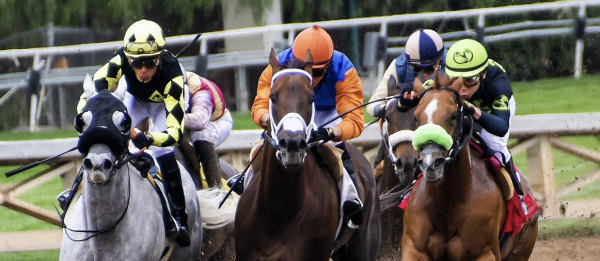Kentucky Derby Odds: How to Spot A Winning Horse
The Kentucky Derby, held annually at Churchill Downs in Louisville, Kentucky, is among horse racing’s most celebrated events. Widely known as the "Run for the Roses, " this 1 1/4-mile race for three-year-old thoroughbreds captivates racing fans with its rich tradition and competitive intensity. For those looking to engage more deeply, the Derby presents a compelling challenge: selecting a winner from a field of 20 contenders, where odds range from short-priced favorites to unlikely long shots.
So, how do you separate the genuine contenders from the hype? In this guide, we’ll break down how Kentucky Derby odds work, reveal the key performance metrics that matter most, and show you how to spot a winning horse,
Understanding Kentucky Derby Odds
Before diving into past performances or pedigree charts, it’s crucial to understand what the odds tell you—and what they’re not.
At their core, Kentucky Derby odds reflect how much money is being bet on each horse, not the horse’s actual likelihood of winning. This is known as pari-mutuel wagering, meaning all bets go into a pool, and the odds shift based on the amount of money placed on each competitor—the more money bet on a horse, the lower its odds, and vice versa.
So, when you see a horse like Journalism with FanDuel odds at 5-1 for the 2025 Kentucky Derby, it reflects strong public support and is widely expected to perform well based on reputation, recent wins, or media hype. Conversely, long shots—like Tiztastic at 119-1—signal slim chances but big rewards. While loading up on the favorite is tempting, history teaches us to stay sharp.
Key Factors for Spotting a Winner
To identify a winning horse, several performance-based factors have proven significant based on historical Kentucky Derby results. These metrics, supported by data, offer a framework for evaluating contenders beyond their odds.
Prep Races
A horse’s performance in major preparatory races leading to the Derby offers a clear window into its competitive readiness. Events like the Santa Anita Derby, Wood Memorial, and Florida Derby are high-stakes contests with substantial purses designed to mimic the intensity and pressure of the Derby itself.
A victory in one of these races demonstrates a horse’s ability to excel against top-tier competition, often under conditions that test speed, stamina, and composure—essential for success on the first Saturday in May. Horses that have proven themselves in these proving grounds tend to carry that form into the Derby, making this a foundational factor for evaluation.
Post Position
The starting gate a horse draws can significantly influence its race strategy and outcome. In the Derby’s enormous field of 20 contenders, positioning matters. Inside gates, closer to the rail, can trap a horse in traffic or force an energy-draining early move, while mid-field positions offer more flexibility to settle into a rhythm or find a clear path.
Outer gates, though farther from the rail, can allow a horse to avoid congestion but may require a more exhaustive trip. Historical patterns suggest that sure gates—particularly those in the middle—give horses a tactical edge, enabling jockeys to execute a plan without the chaos that often hampers the innermost or outermost slots.
Running Style
A horse's running style is pivotal in navigating the Derby’s crowded and fast-paced environment. Horses that thrive by taking an early lead or staying close to the front, known as early speed or early/presser types according to Brisnet classifications, often benefit from this approach. In a field this size, being near the lead can help a horse avoid getting boxed in or caught behind a wall of rivals, especially as the pace quickens. This style suits the Derby’s dynamics, where establishing an early position can set the stage for a strong finish, assuming the horse has the endurance to sustain it.
Speed
Not all wins are created equal. A horse cruising past weaker competition may look flashy but hide flaws. That’s where speed figures come in—they measure how fast a horse ran, adjusted for track conditions. A horse with strong recent speed figures shows it's not just winning—it’s doing it with legitimate power. And in a field as deep as the Derby, raw speed helps separate the genuine contenders from the pretenders.
Stamina
The Kentucky Derby’s 1 1/4-mile distance demands more than just speed; it requires endurance to maintain effort through the final stretch. A horse’s finishing times in its last prep race, particularly over the closing fractions, reveal its staying power. Those who can close out a race with a burst of energy, even after a mile or more, show they’re built for the Derby’s grueling test. This stamina separates horses that fade late from those capable of powering through the Churchill Downs homestretch, a defining moment in the race.
Combining Factors with Odds
This is where intelligent betting moves from theory to practice. You've done the homework—scouted the prep races, studied the running styles, and picked apart speed figures. Now it's time to layer in the odds and ask the all-important question: Is this horse worth the price?
Odds don’t tell the whole story—but when paired with performance data, they become a powerful tool for identifying value. You're not just trying to pick the winner. You're trying to find the horse that gives you the best return on your insight.
Start by building a shortlist of horses that check off several of the key factors:
- Strong prep race performance
- Favorable post position
- Tactical running style (especially those that can stay near the lead)
- Proven speed and stamina
Then look at their odds—not to bet the lowest number, but to find where the public may have overlooked potential. The ideal play is a horse that fits the winning profile but is priced like an outsider.
Crossing the Finish Line
The Kentucky Derby is unpredictable—but not unknowable. A clear understanding of how odds reflect public perception—combined with a sharp analysis of speed, stamina, and prep performance—can give you a distinct advantage at the betting window. Remember, even the most intelligent bets can go sideways—it’s horse racing, after all. But with the right approach, you’ll have a better shot at picking a winner and enjoy the ride more.
|
|















